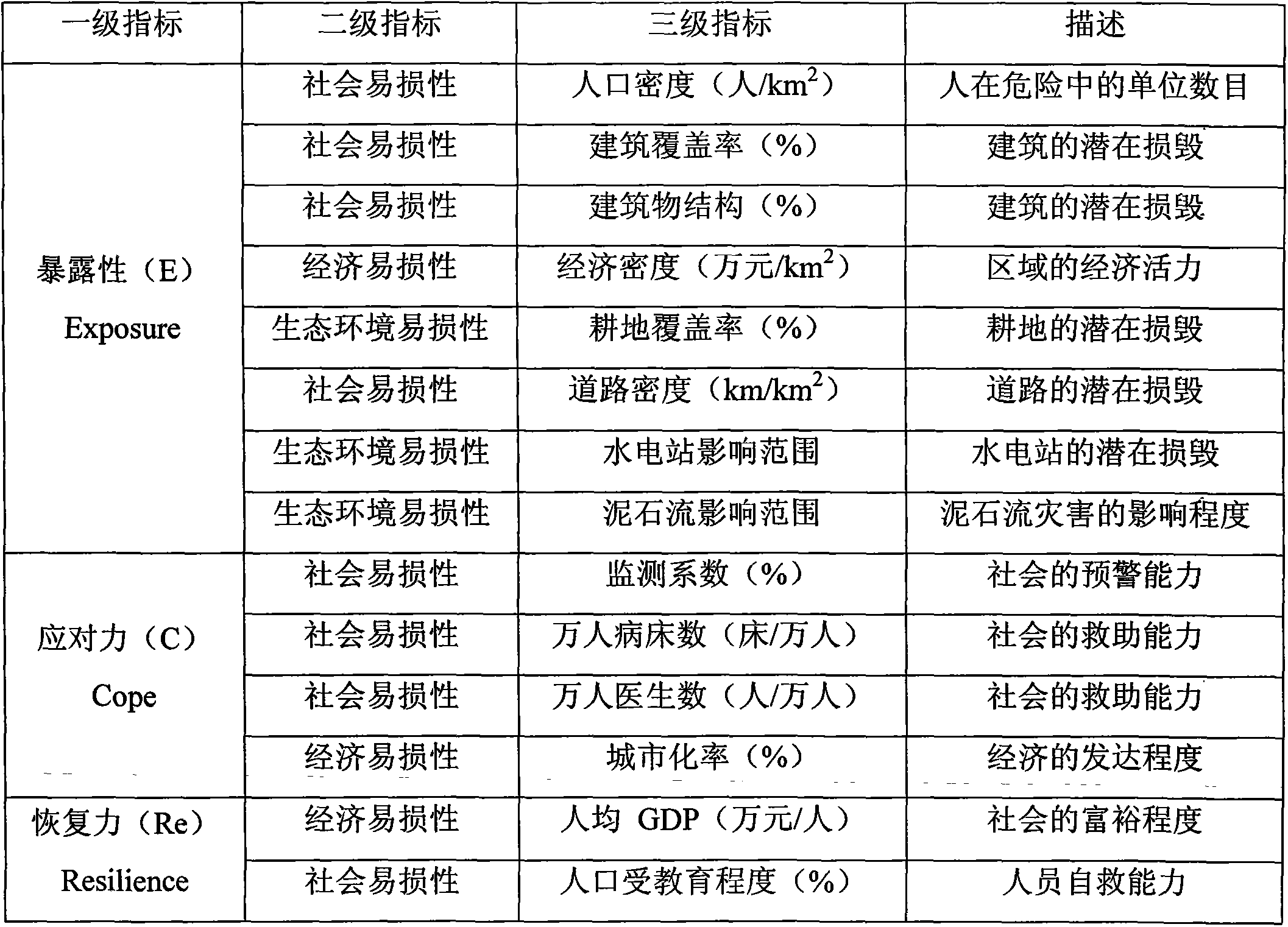Method for conducting quantitative evaluation on vulnerability of debris flow disasters
A quantitative evaluation and debris flow technology, applied in special data processing applications, instruments, electrical digital data processing, etc., can solve problems such as index problems, unresolved evaluation models, uncertainties, lack of theoretical basis, etc., to facilitate quantitative evaluation Effect
- Summary
- Abstract
- Description
- Claims
- Application Information
AI Technical Summary
Problems solved by technology
Method used
Image
Examples
Embodiment
[0026] The processing flow of the vulnerability assessment of debris flow disasters in the upper reaches of the Minjiang River based on GIS and grid technology is as follows: first calculate the exposure (E) index of the disaster-affected body, a total of 8 index factors, obtain the basic map of each factor, and calculate each The value of the factor; use Create Fishnet in ArcGIS to establish a grid of 0.5km×0.5km in the upper reaches of the Minjiang River; then use the Intersect tool to superimpose each factor map with the grid in the upper reaches of the Minjiang River to establish a relationship between the factors and the grid; Then export the attribute table of the superimposed factor into a data table in the format of *.dbf, and use Excel to add and merge the values distributed in the same grid in the factor map to obtain the distribution of the factor in the grid; and then use Excel The processed data is connected to the grid on the upper reaches of the Minjiang River ...
PUM
 Login to View More
Login to View More Abstract
Description
Claims
Application Information
 Login to View More
Login to View More - R&D
- Intellectual Property
- Life Sciences
- Materials
- Tech Scout
- Unparalleled Data Quality
- Higher Quality Content
- 60% Fewer Hallucinations
Browse by: Latest US Patents, China's latest patents, Technical Efficacy Thesaurus, Application Domain, Technology Topic, Popular Technical Reports.
© 2025 PatSnap. All rights reserved.Legal|Privacy policy|Modern Slavery Act Transparency Statement|Sitemap|About US| Contact US: help@patsnap.com


